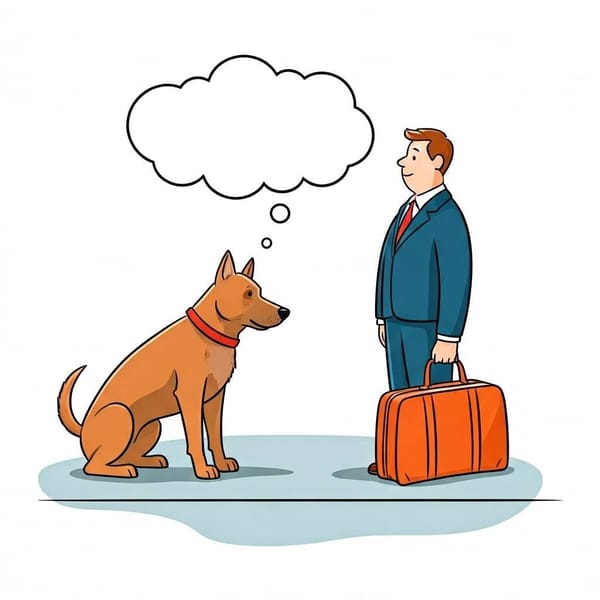The first round-the-world trip: the brutal journey of Magellan and Elcano 500 years ago
Neither Magellan nor his men were aware then that their expedition would change the course of history: without knowing it, they would become the first to circumnavigate the world.

On 20 September 1519, a fleet of five ships and 250 men set sail from the port of Sanlúcar de Barrameda, in southern Spain, towards the Atlantic. In command of the flagship, the nao Trinidad was the Portuguese captain Fernando de Magallanes.
Neither Magellan nor his men were aware then that their expedition would change the course of history: without knowing it, they would become the first to circumnavigate the world, a milestone that celebrates its fifth centenary.
But it was also a true feat of human resistance: the first circumnavigation of the globe was a veritable hell of disease, hunger, and violence, notes historian Jerry Brotton in BBC History Magazine.
Only 18 of those 250 crew members returned to Sanlúcar, three years after leaving that port. And while many credit Magellan with being the first person to circumnavigate the Earth, the Portuguese are not among the 18 who survived. But that does not detract from the merit of being the explorer who devised and undertook this historic - and hard - voyage.
The idea of Magellan
The main destination of this great journey was not to go around the world but to reach the Spice Islands - or Moluccan islands, in Indonesia - and their riches along the western route, which was what Christopher Columbus had intended when he met the American continent.
Portugal controlled the known route to the east through the Cape of Good Hope, in the extreme south of Africa. After examining maps and balloons, Magellan came to a surprising conclusion.
He believed he could reach the region much faster by traveling in the opposite direction, around the tip of South America, across the newly discovered Pacific Ocean, and to the spice-producing islands in the Indonesian archipelago. But Manuel I, the king of Portugal, rejected the idea of Magellan. This did not stop the Portuguese explorer, who then went to offer his services to Manuel I's great rival: Charles I of Spain and V of the Holy Roman Empire.
Portugal completely dominated the route to the east, but it was not interested in setting up an expedition to the west, because it already controlled the other, and Magellan's project there made little sense. But Spain welcomed him wonderfully
Although many Spanish nobles were wary of an expedition under the command of a Portuguese commander, Emperor Charles V accepted Magellan's proposal. This consisted of sailing around Cape Horn, crossing to the Moluccas, embarking a cargo of spices, and returning by the same route, claiming the islands for Spain.
Shortly after the discovery of Columbus, in 1494, Spain and Portugal, the great powers of the time, reached an agreement to share the navigation zones of the Atlantic Ocean and the territories of the "new world" in the so-called Treaty of Tordesillas.
Magellan was convinced that the Moluccas were within the Castilian sphere of influence, and therefore could bring the spices without problems from there. But behind that belief of the Portuguese was a miscalculation that had disastrous consequences for his expedition.
The first obstacles
The fleet departed from Sanlúcar to the Canary Islands, then headed for the Cape Verde Islands before crossing the Atlantic to the South American coast, reaching the current bay of Rio de Janeiro in December 1519. It was from that moment on that conditions began to deteriorate.
After months of searching the east coast of South America, Magellan could not find a passage to the west. The crew had to endure a brutal winter - and the sailors had to sleep on deck in almost freezing conditions - while rations were reduced and hunger increased, leading to riots on the ships.
The mood worsened further when one of the ships sank due to the worsening weather, and the search for the promised Pacific strait spread over weeks, then months. In the hard crossing in those unknown waters another of the ships deserted and escaped back to Spain.
It was an enormous loss because it was San Antonio, the largest and the one that carried more food. It was an expedition between riots, rebellions, hunger, thirst. It was losing many of its components in the first half.
But after surviving the winter and the many months of fruitless search, Magellan and his men finally found their way to the other side of South America. On November 28, 1520, they entered what Magellan baptized mare Pacificum (Pacific Sea). The Portuguese navigator, however, did not know the magnitude of the threat that still awaited him.
The Pacific
Magellan thought that the most difficult part of the journey had already passed and there was only a brief cruise to the rich Spice Islands. But the combination of bad maps, miscalculations, and the fact that he was the first European to be in these waters turned this brief cruise into a 100-day nightmare of starvation, scurvy, and death.
Magellan had used maps and globes that underestimated the circumference of the Earth. He could not even imagine the scale of the Pacific, an ocean that is twice the size of the Atlantic and covers one-third of the Earth's surface. So they spent the next three months crossing the Pacific in search of land. The conditions were horrible and the scurvy began to devastate the crew.
And this is what Antonio Pigaffeta, one of the crew members whose chronicles on board became one of the best-known stories of the voyage, recounted:
For three months and twenty days, we couldn't get fresh food.
We ate sponge cake, although it was no longer sponge but cake powder mixed with worms and what was left stank of rat urine.
We drank yellow water that had been rotten for many days. We also ate some ox skins that covered the upper part of the main courtyard.
When Magellan realized the size of the Pacific it was clear to him that the Spice Islands were not in the Castilian sphere of influence. So he decided to take another objective: the Philippine Islands.
When he touches land in the Philippines and makes contact with the local chiefs and kings, he sees that land has resources, gold and decides to get into the local politics of those islands to make the most of it. In a terrible decision, Magellan initiates a policy of making alliances with certain kings, but the king of the island of Mactan opposes it. The Portuguese then decides to invade the island along with 40 other crew members.
It was a fatal overstepping. The people of Mactan resisted violently and Magellan and his sailors clashed with hundreds of local warriors. Magellan was killed and his body was never recovered. For the Portuguese navigator, the voyage ended in Mactán, without completing the round-the-world tour. But the expedition he planned and undertook did not end.
The long-awaited spices, under a new commander
The Spanish captain Juan Sebastián Elcano remained as the new commander of the expedition, and it was under his command that they sailed to the destination that Magellan aspired to the Spice Islands or the Moluccan Islands, where they arrived on November 1521.
By then they already imagined that these islands were not in the part of Castilian influence established by the Treaty of Tordesillas. So they hurriedly loaded the spices into the only two ships they already had and decided to put an end to the odyssey and set out on the way back.
The choice now was which route to follow. The Nao Trinidad, which had been commanded by Magellan, tried to return through the Pacific but was not captured by Portuguese ships. The ship Victoria, with Elcano at the front, headed back to Spain through the Indian Ocean and bordering the Cape of Good Hope. But again there were problems.
It was epic navigation, because from the island of Timor until they reach the islands of Cape Verde, in the Atlantic, do not land, and face again the problems of hunger, thirst, tiredness, ship in poor condition after almost three years of navigation.
Although they didn't want to dock in Cape Verde, under Portuguese rule, the conditions oblige them. But they pose a ploy: they can't say they come from the Spice Islands, because that would lead to their imprisonment, so they say it's a lost ship from America. Although at first they were believed, the Portuguese ended up capturing 13 of the crew and only 18 managed to escape in the ship Victoria.
Besides Elcano and Pigafetta, the other sailors who returned were: Juan de Acurio, Juan de Arratia, Juan de Zubileta, Juan de Santander, Diego Carmena, Vasco Gómez Gallego, Hernando de Bustamante, Miguel de Rodas, the master Hans, Antón Hernández Colmenero, Juan Rodríguez, Francisco Rodríguez, Martín de Yudícibus, Francisco Albo, Nicolás el Griego and Miguel Sánchez. Everyone arrived in absolutely distressing conditions.
Emperor Charles V received some of the survivors and granted Elcano an annual rent and a coat of arms with a globe and the legend: Primus circumdedisti me (The first to circumnavigate me). The captain later returned to another expedition to the Pacific, where he died in 1526.
The consequences of the Magallanes and Elcano expedition
Magellan's expedition to reach the Spice Islands by another route changed the course of history but had an enormous human cost: more than 200 crew members died, many in terrible circumstances.
For Braulio Vázquez, archivist at the General Archive of the Indies in Seville, the world changes mainly for two things.
"First, the size of the world, that is to say, the Pacific, which we already know its size and the following trips will take it very much into account. And, on the other hand, they realize that there are no longer, as was said in medieval chronicles, monstrous beings, or mythological beings, but that everywhere we find the same thing, they are all human beings."
Europe became aware of the complexity and cultural differences in the world. On a geopolitical level, Magellan's trip exacerbated the political and commercial tensions between Spain and Portugal for some years. But the consequences of the journey undertaken by the Portuguese explorer must be seen in the long term.
Trade routes flourished in the second half of the 16th century, as the links Magellan helped establish between Europe and Southeast Asia allowed the movement of people and goods through South America.
Magellan's mentality, his imagination, and his determination to use the globe rather than a flat map to understand the world opened up a profusion of new commercial opportunities.
Arguably, his great journey fired the initial weapon in the race for globalization, with all the risks and opportunities that this presents to us today.
Source: BBC Mundo




